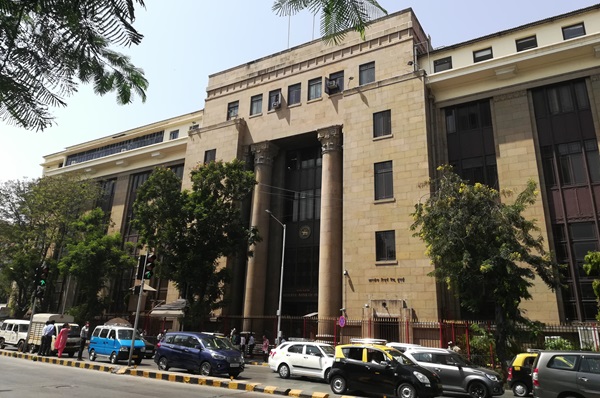.png)

Vivek Kumar, an economist at QuantEco Research, focuses on the Indian economy and specialises in the macro-quantitative intersections in the currency and bond markets.
March 8, 2025 at 7:22 AM IST
Vivek Kumar, an economist at QuantEco Research, focuses on the Indian economy and specialises in the macro-quantitative intersections in the currency and bond markets.
A former Governor of the Bank of England, Mervyn King, while delivering a speech on monetary policy, invoked King Canute, who as per European folklore, set his throne by the seashore and commanded the incoming tide to halt. Unsurprisingly, driven by the laws of nature, the tide continued to rise and dashed over his feet and the throne.
While this apocryphal anecdote has evoked many popular references in the modern economic era, C. Rangarajan, one of the former Reserve Bank of India Governors once quipped –
“Central banks cannot act like King Canute. They cannot order interest rates to behave. They must create conditions under which the desired changes in interest rate come about.”
This simple, yet powerful analogy, provides a framework for assessing the RBI’s recent policy pivot. In February 2025, the Monetary Policy Committee of the central bank announced its first rate cut in five years.
However, with liquidity in the banking system getting tight largely on account of RBI’s forex intervention along with a minor role played by seasonal and frictional factors, doubts started to emerge with respect to the efficacy of this monumental step.
Notably, short-term money market rates tightened, forcing a few banks to raise select Marginal Cost of Funds-based lending rates.
That prompted course correction from the RBI, which recently announced steps to infuse massive liquidity into the banking system. The RBI said that ₹2.7 trillion worth of durable/long-term liquidity will be provided this month through foreign exchange swaps and bond purchases.
This would not just arrest the tightness in money market rates, but more importantly, help in transmitting the MPC’s signal of lower interest rates in the economy.
Liquidity in the banking system, or the money market at a broader level, acts as a lubricant for the monetary system in any economy by influencing the availability of money. It can be interpreted as a ‘quantity’ signal from the central bank, which is different from its ‘price’ signal —the monetary policy rate or its target, which typically happens to be an overnight or other short-term rate.
The alignment of liquidity by the central bank with its overall stance on monetary policy as well as regulation results in an optimal and desired outcome for the overall economy - by corollary, a poor alignment indicates subpar outcomes accompanied by transmission losses.
What determines the alignment of liquidity with other policy objectives? How should this alignment work in practice? Let’s revisit some of the earlier liquidity guidelines:
- As per the RBI’s 2019 Report of the Internal Working Group to Review the Liquidity Management Framework, persistent liquidity deficit or surplus greater than 0.5% of Net Demand and Time Liabilities, should be offset through appropriate durable operations such as OMOs or FX swaps.
- As per RBI’s 2022 Report on Currency and Finance, liquidity surplus more than 1.5% of NDTL is inflationary in nature. A one percentage point exogenous increase in the liquidity surplus tends to push up CPI inflation by 60 bps within a year. However, surplus liquidity within the threshold of 1.5% of NDTL, is found to pose no significant risks to inflation.
While the internal working group proposed a comfort band ranging between -0.5% and +0.5% of NDTL for liquidity, the Report on Currency and Finance prescribed a comfort-discomfort threshold at +1.5%.
This leaves the issue of required level of liquidity somewhat unsettled and hence creates space for policy discretion and flexibility. This flexibility can be used to calibrate the liquidity response function depending upon the output gap in the economy and financial market stability.
Under normal business conditions, a liquidity surplus of +0.5% to +1.0% of NDTL could serve as a sweet spot for liquidity in a monetary easing cycle, while -0.5% to 0.0% of NDTL could serve the same in a monetary tightening cycle.
While the RBI has not explicitly referred to core liquidity--headline liquidity adjusted for the government’s cash balances--in its analysis, these soft benchmarks would be more relevant due to inherent volatility in government’s cash position.
Focusing on the current state, the cumulative liquidity injection of ₹2.7 trillion will help steer core liquidity towards a surplus of 0.4% of NDTL by the end of this month compared with -0.01% as of end February 2025.
Going into 2025-26, the RBI would need to maintain core liquidity surplus in the 0.5-1.0% range, assumes inflation remains close to the target as projected, to ensure adequate credit flow for a sustainable recovery in growth.
This would require core liquidity surplus to be in the range of ₹1.3 trillion to ₹2.5 trillion by the end of March 2026, which in turn points towards the need for ₹800 billion to ₹2 trillion incremental liquidity support from the RBI. This assumes a broadly stable rupee with mild depreciation pressure. Any excessive weakness in the rupee will, indeed, increase the demand for liquidity support from the central bank.
The RBI would need to prioritise durable instruments such as OMOs, FX swaps, and the cash reserve ratio to infuse primary liquidity. Excessive reliance on the repo window—whether fixed or variable—designed for overnight funding and fine-tuning, would be ineffective in supporting credit growth.




